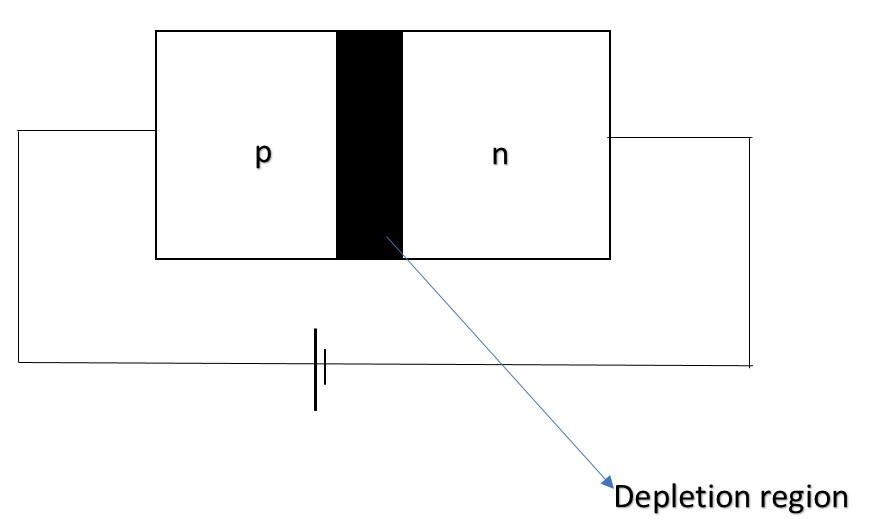
Application of a forward bias to a p-n junction:
A. Increases the number of donors on the n-side.
B. Increases the electric field in the depletion zone.
C. Increases the potential difference across the depletion zone.
D. Widens the depletion zone.
Answer
533.4k+ views
Hint: p-n junction is an active element of the circuit, which is used where we want the flow of current in one direction and not in both. It is called a p-n junction because it is built using a p-type and a n-type semiconductor. When this diode is forward biased, only in that case it allows the current to flow through it.
Complete answer:

The above diagram shows a forward biased p-n junction. We can identify the forward or reverse bias of a p-n junction by knowing its connection with the battery. If the positive terminal of the battery is connected with p type semiconductor and negative terminal to the n type semiconductor, then the p-n junction will be forward biased and otherwise it is reverse biased and no current will flow through it in that case.
Now, in the forward biased condition, the negative terminal of the battery pushes the electrons in the n type region. The holes present in the depletion region hence get filled up and the width of depletion region reduces. This means that the concentration of electrons on the n side of the junction gets increased thereby reducing the width of the depletion region.
So, the correct answer is “Option A”.
Note:
Depletion region is the region of meeting of p and n type material. In forward biased conditions, its width is minimal. Hence it allows the passage of electrons very easily. One must also note that all other options are very true, but for reverse biased conditions. In short we can say the battery pushes more electrons (donors) into the n-type material side.
Complete answer:

The above diagram shows a forward biased p-n junction. We can identify the forward or reverse bias of a p-n junction by knowing its connection with the battery. If the positive terminal of the battery is connected with p type semiconductor and negative terminal to the n type semiconductor, then the p-n junction will be forward biased and otherwise it is reverse biased and no current will flow through it in that case.
Now, in the forward biased condition, the negative terminal of the battery pushes the electrons in the n type region. The holes present in the depletion region hence get filled up and the width of depletion region reduces. This means that the concentration of electrons on the n side of the junction gets increased thereby reducing the width of the depletion region.
So, the correct answer is “Option A”.
Note:
Depletion region is the region of meeting of p and n type material. In forward biased conditions, its width is minimal. Hence it allows the passage of electrons very easily. One must also note that all other options are very true, but for reverse biased conditions. In short we can say the battery pushes more electrons (donors) into the n-type material side.
Recently Updated Pages
Master Class 12 Business Studies: Engaging Questions & Answers for Success

Master Class 12 Biology: Engaging Questions & Answers for Success

Master Class 12 Physics: Engaging Questions & Answers for Success

Class 12 Question and Answer - Your Ultimate Solutions Guide

Master Class 12 English: Engaging Questions & Answers for Success

Master Class 12 Economics: Engaging Questions & Answers for Success

Trending doubts
What is transplantation in agriculture class 12 biology CBSE

Hydrological cycle is controlled by A Grasslands B class 12 biology CBSE

Who discovered the cell and how class 12 biology CBSE

What is the Full Form of PVC, PET, HDPE, LDPE, PP and PS ?

When was the first election held in India a 194748 class 12 sst CBSE

One megawatt is equal to how many units of electri class 12 physics CBSE




